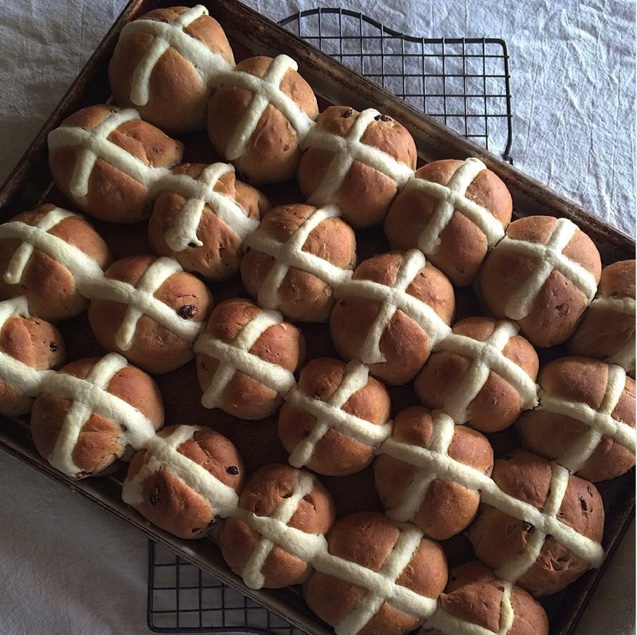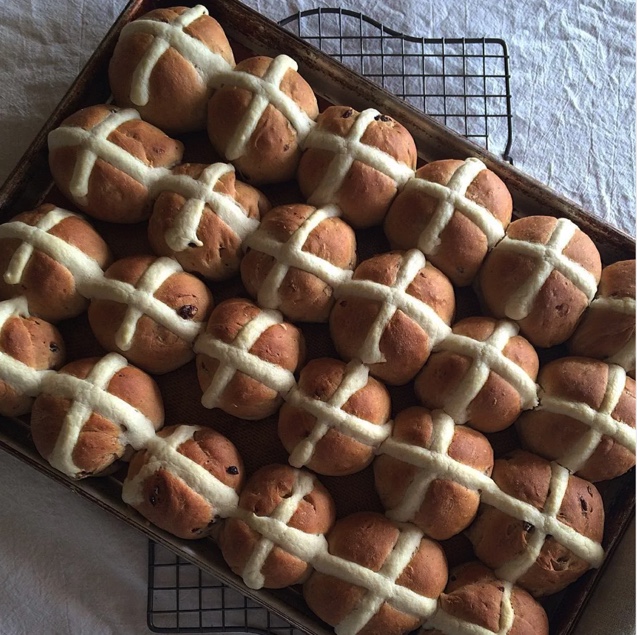
I love Hot Cross Buns, but this hasn’t always been the case. As a kid, I couldn’t stand the candied peel or the currants. I was far more interested in chocolate and jelly beans. Luckily, things changed in the late 70s when I worked at a whole food shop called Gateways in Canterbury, England. The owners, Trish and Trish, baked an enormous batch of Hot Cross Buns at Easter every year. Starting long before dawn, the buns would come out of the oven just as the shop opened. They were absolutely delicious and, fortunately, completely turned me around on the HCB front. For many years, I have been baking Hot Cross Buns at Easter and while I don’t necessarily get up before dawn, I do try to organize myself so that the buns come out of the oven in time for morning coffee. I have used a variety of recipes over the years, but have been consistently loyal to a terrific recipe from Bread, Cake, Doughnut, Pudding, an excellent baking book from Justin Gellatly. This year, I didn’t have the candied peel called for, so I substituted marmalade, which turned out really well. Fresh out of the oven and slathered with butter, they were perfect. Plus, they have a fascinating history.
Hot Cross buns tell a story, imbued with religious ritual, laws and superstition. Today, much of their history is rooted in Church of England beliefs surrounding the crucifixion. At one time, the selling of Hot Cross Buns were controlled by a law set by Queen Elizabeth I in the 16th century. Stating that the buns could only be sold at times of religious celebration such as Christmas and Easter, this regulation strictly limited their consumption. That was, until people started baking hot cross buns in their own homes and recognizing the difficulty of controlling home bakers, the law was abandoned.
There are also a variety of superstitions attributed to the Hot Cross Bun. One version has it that Hot Cross Buns baked on Good Friday and hung from the rafters will ward off evil spirits all year long. Another, that Hot Cross Buns had medicinal benefits. Tear off a corner of the bun and feed it to the infirm and, Bob’s our Uncle, as they say.
Interesting for me, and something I came across just this year, are the pagan roots of the humble sweet bun. Hot Cross Buns are attributed to the pagan celebration of Eostre, the Celtic Goddess of Spring, and who the current Easter celebration is named after. The Saxons made buns with a cross to signify the four phases of the moon and were eaten during the month-long celebration of the arrival of Spring as an offering to the Goddess Eostre.
Regardless which version of the history of the Hot Cross Bun you believe, it is a good reminder that the food we eat always has a story to tell. Food for thought!


Food for Thought: Eostre and the Hot Cross Bun
2 Comments